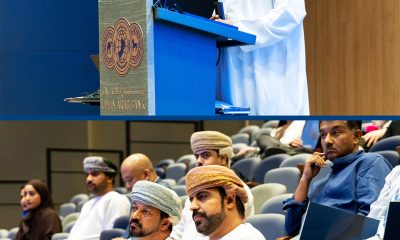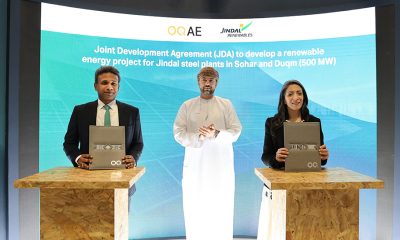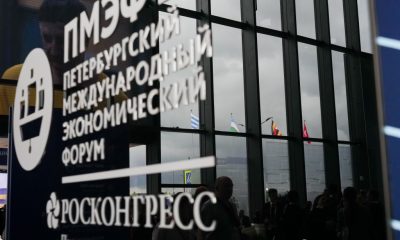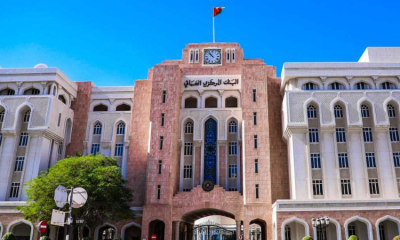Environment
Oman Launches Initiatives to Reduce Carbon Emissions

The Sultanate of Oman has stepped up its game in reducing carbon emissions to achieve the net-zero plan by 2050 through initiatives in the land, sea and air transport sectors, as well as the communications and information technology sectors.
Abdullah Ali Al Busaidi, Director General of Oman Logistics Centre at the Ministry of Transport, Communications and Information Technology and an expert at the Zero Neutrality Team, explained that there is a clear plan for land transport projects in cooperation with the public and private sectors to replace light vehicles with environmentally friendly vehicles.
He pointed to the great leap in the use of electric cars that reached 1,500 vehicles according to the latest statistics, and the number of charging points has reached 120 points in various governorates.
Hydrogen energy is the most suitable solution to reduce emissions from heavy vehicles, said Al Busaidi, who explained that there are challenges in preparing the infrastructure to provide hydrogen in appropriate quantities, but the Sultanate of Oman has currently decided to activate green lanes for trucks.

He added that emissions from the land transport sector amount to 20 per cent of total emissions in all sectors. After adding the air and sea transport sectors, they may amount to 28 per cent of total emissions, according to what was calculated by port operators and local airlines, noted Al Busaidi.
He pointed out that the targets for reducing emissions in the Sultanate of Oman were divided into three stages. In the transportation sector, the reduction rate in 2030 will reach 3 per cent of total emissions, an additional 34 per cent in 2040, and reach 100 per cent by 2050.
He affirmed that the work plans currently being carried out by the Ministry of Transport, Communications and Information Technology on heavy transport are the gradual transition to hydrogen trucks using the dual-combustion truck, as this technology was developed locally by the private sector and a 52 per cent reduction was proven.
As for the emissions of the communications and information technology sector, Al Busaidi said that these emissions are currently based on information centres and communication towers, in light of the country’s expansion in the digital economy and information technology infrastructure.
Work is underway on emissions inventory and reducing them, in a manner that makes Oman keep pace with the world’s plans in this approach.
He stated that there are also initiatives for the maritime transport sector to reduce emissions by converting the facilities used to environmentally friendly ones and converting equipment to electric ones away from fossil fuels, in light of the Sultanate of Oman’s approach to becoming a regional centre for supplying ships with clean energy.
He concluded that the Civil Aviation Authority also has initiatives in air transport, including sustainable fuel projects for aircraft.
-

 Banking & Finance2 weeks ago
Banking & Finance2 weeks agoOman Arab Bank Announces Increase of Authorised Capital to RO500mn and Paid‑In Capital Boost of RO50mn
-

 Renewables2 months ago
Renewables2 months agoJindal Renewables and OQ Alternative Energy Sign Joint Development Agreement to Advance Integrated Renewable Power Projects in Oman
-

 Bahrain1 week ago
Bahrain1 week agoSPIEF 2025 focused on global and regional economic processes, market transformation, new tech, investment climate, financial policy and people
-

 Alamaliktistaad Magazines1 month ago
Alamaliktistaad Magazines1 month agoAl-Iktisaad, May 25
-

 OER Magazines1 month ago
OER Magazines1 month agoOER, May 2025
-

 Leaders Speak2 months ago
Leaders Speak2 months agoOERLive SPOTLIGHT: Oman Sustainability Week 2025 and Oman Petroleum & Energy Show
-

 Business2 months ago
Business2 months agoSt. Petersburg International Economic Forum 2025 unveils its Business Programme
-

 Banking & Finance1 month ago
Banking & Finance1 month agoCentral Bank of Oman Issues Regulatory Framework for Digital Banks






























